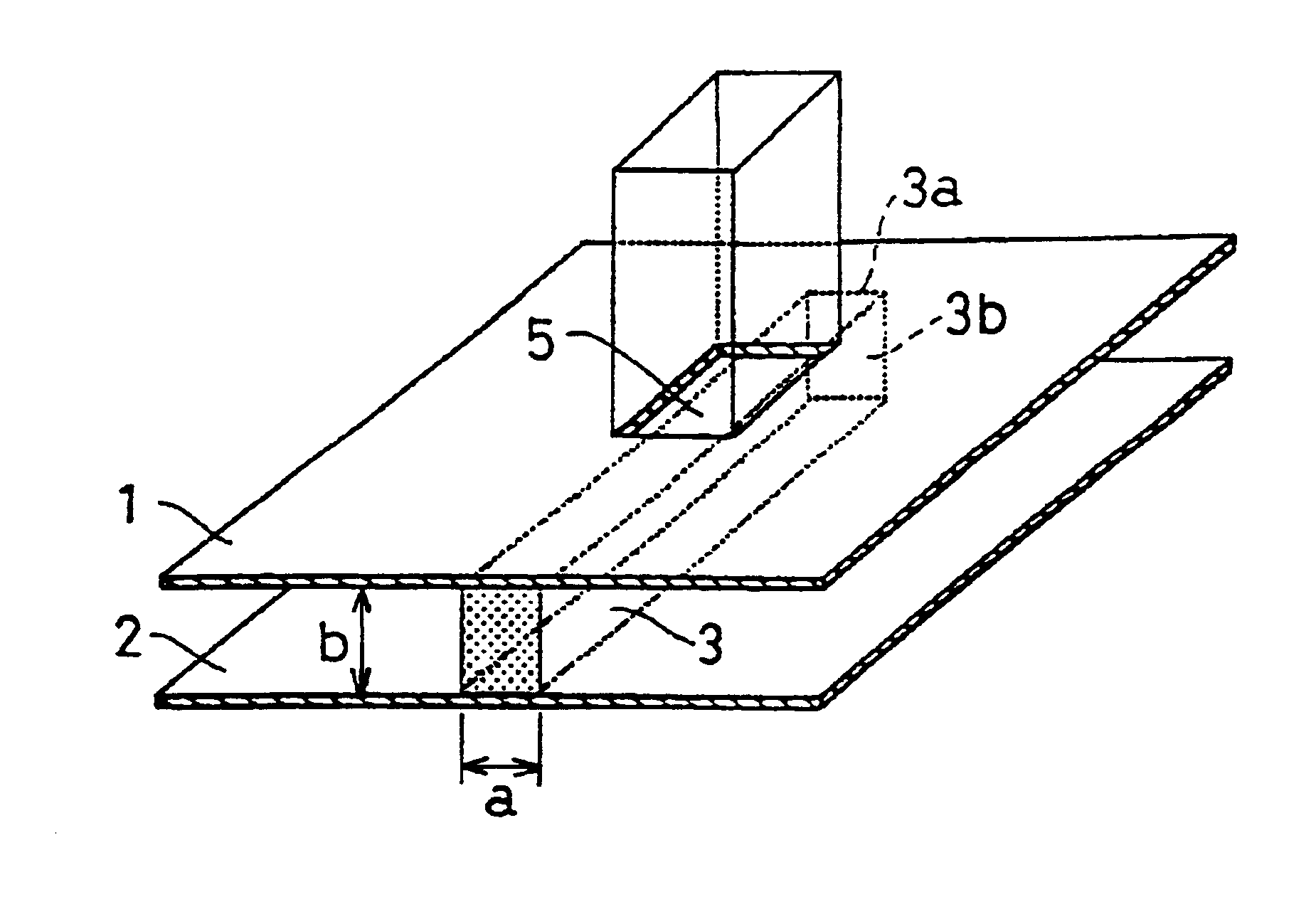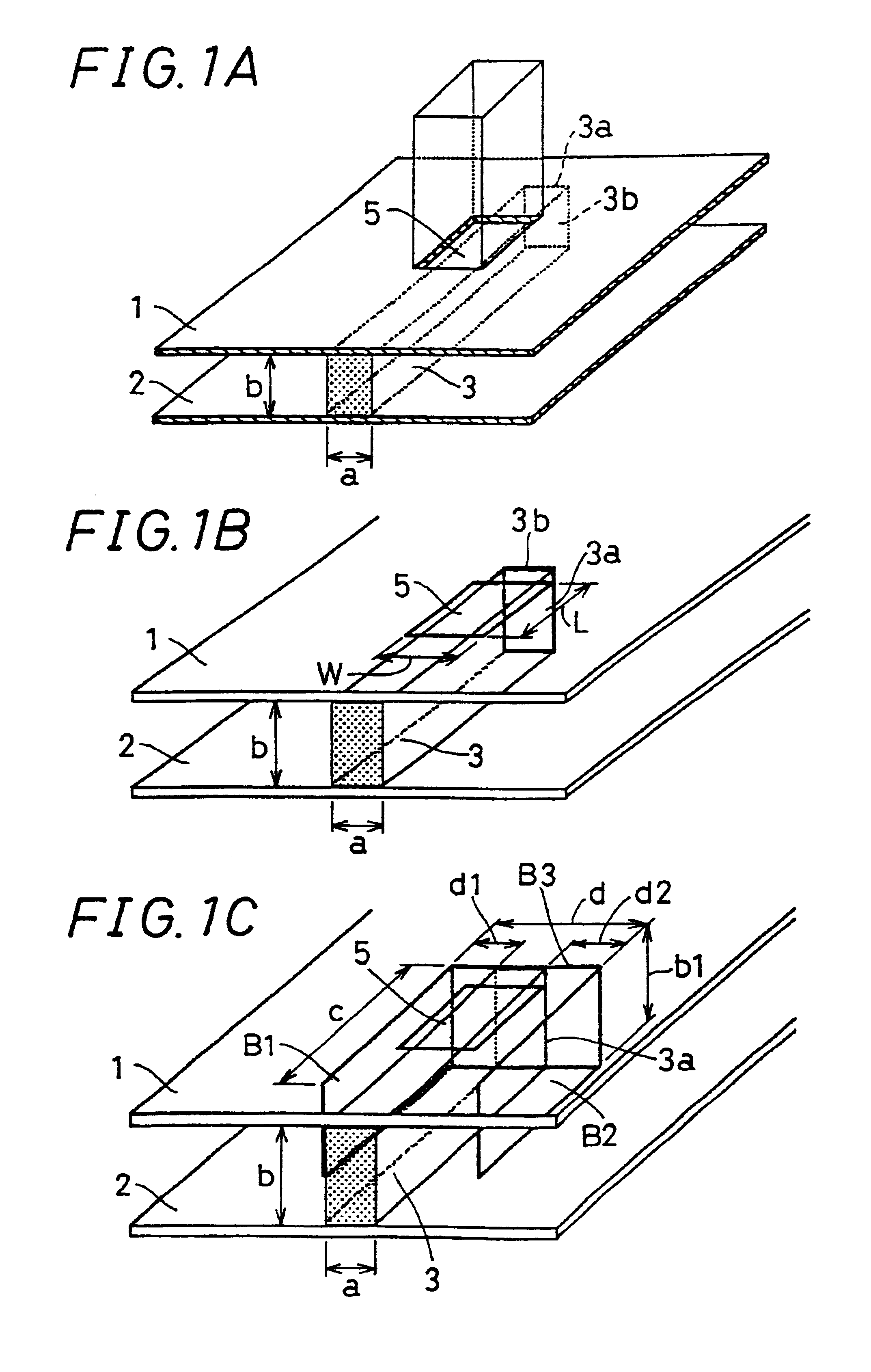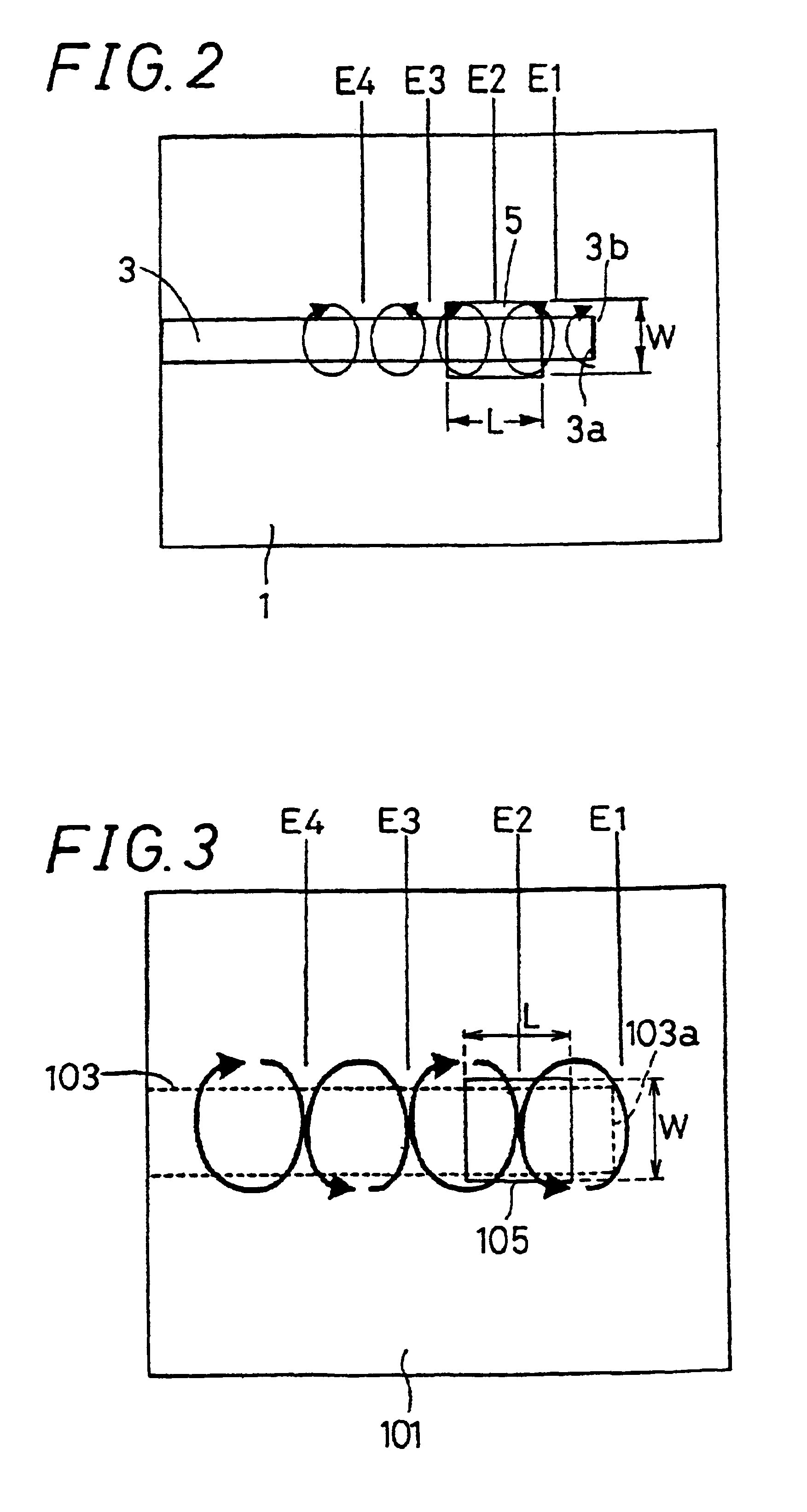Structure for connecting non-radiative dielectric waveguide and metal waveguide, millimeter wave transmitting/receiving module and millimeter wave transmitter/receiver
a technology of non-radiative dielectric waveguides and metal waveguides, which is applied in the direction of antenna connectors, electrical devices, antennas, etc., can solve the problems of not being able to meet the miniaturization of a millimeter wave integrated circuit, conventional connection structures are not suited for circuit boards, and the structure is not satisfactory with respect to keeping signal losses small, etc., to achieve the effect of low loss
- Summary
- Abstract
- Description
- Claims
- Application Information
AI Technical Summary
Benefits of technology
Problems solved by technology
Method used
Image
Examples
working example 1
The following is a description of a working example of the invention.
A structure for connecting an NRD guide and a metal waveguide as shown in FIGS. 1A to 1C and FIG. 4 was made as follows. First, the NRD guide of FIGS. 1A to 1C was prepared as follows: Two aluminum sheets of 6 mm thickness serving as the pair of parallel planar conductors 1, 2 were arranged in parallel at a distance of 1.8 mm, and a dielectric strip 3 made of cordierite ceramics with 0.8 mm width, 1.8 mm height, 60 mm length and a dielectric constant of 4.8 was placed between the parallel planar conductors 1, 2, thus producing the main portion of the NRD guide. Then, the connection structure shown in FIG. 1B was made on the side of the terminal end 3a of the dielectric strip 3. That is to say, centered on a position 3.2 mm from the end face of the terminal end 3a of the dielectric strip 3, a rectangular aperture 5 with a width W of 1.55 mm and a length L of 3.10 mm was formed in the parallel planar conductor 1.
Then...
working example 2
A structure for connecting an NRD guide and a metal waveguide as shown in FIGS. 11A and 11B and FIG. 12 was made as follows. First, the NRD guide of FIGS. 11A was prepared as follows: Two aluminum sheets of 6 mm thickness serving as the pair of parallel planar conductors 101, 102 were arranged in parallel at a distance of 1.8 mm, and a dielectric strip 103 made of cordierite ceramics with 0.8 mm width, 1.8 mm height, 60 mm length and a dielectric constant of 4.8 was placed between the parallel planar conductors 101, 102, thus producing the main portion of the NRD guide. Then, the connection structure shown in FIG. 11B was disposed on the top face of the main portion on the side of the terminal end 103a of the dielectric strip 103. That is to say, centered on a position 2.52 mm from the end face of the terminal end 103a of the dielectric strip 103, a rectangular aperture 105 with a width W of 1.55 mm and a length L of 3.10 mm was formed in the parallel planar conductor 101.
As shown i...
PUM
 Login to View More
Login to View More Abstract
Description
Claims
Application Information
 Login to View More
Login to View More - R&D
- Intellectual Property
- Life Sciences
- Materials
- Tech Scout
- Unparalleled Data Quality
- Higher Quality Content
- 60% Fewer Hallucinations
Browse by: Latest US Patents, China's latest patents, Technical Efficacy Thesaurus, Application Domain, Technology Topic, Popular Technical Reports.
© 2025 PatSnap. All rights reserved.Legal|Privacy policy|Modern Slavery Act Transparency Statement|Sitemap|About US| Contact US: help@patsnap.com



